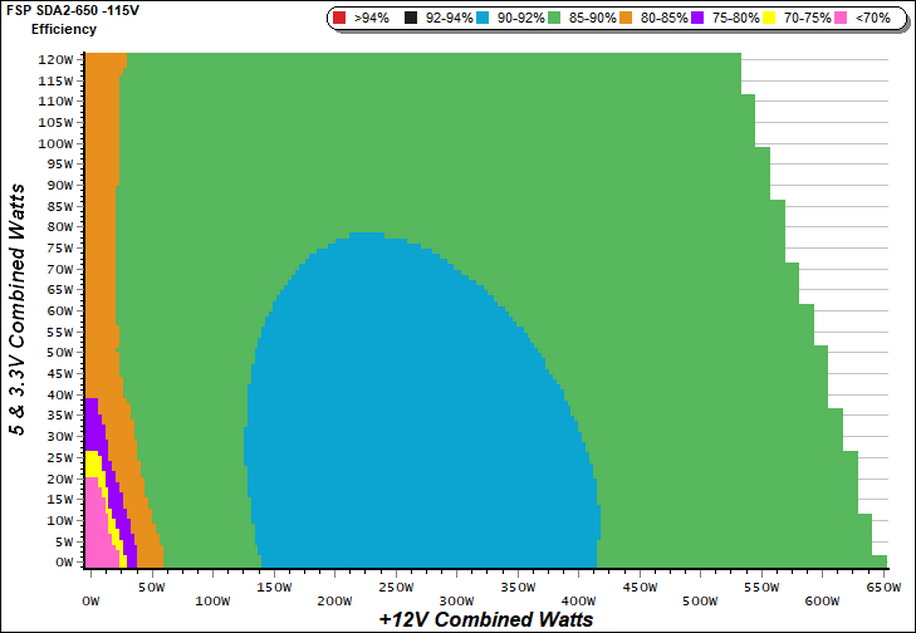FSP Dagger Pro 650W Power Supply Review: Compact and Strong
Why you can trust Tom's Hardware
Protection Features, DC Power Sequencing, Cross-Load Tests and Infrared Images
Protection Features
Check out our PSUs 101 article to learn more about PSU protection features.
| Protection Features | |
| OCP | 12V: >69A (>127.78%), <11.270V 5V: 29.3A (146.5%), 4.865V 3.3V: 27A (135%), 3.211V 5VSB: 4.4A (176%), 4.941V |
| OPP | >796.78W (>122.58%) |
| OTP | ✓ (146°C @ 12V heat sink) |
| SCP | 12V: ✓ 5V: ✓ 3.3V: ✓ 5VSB: ✓ -12V: ✓ |
| PWR_OK | Proper Operation |
| NLO | ✓ |
| SIP | Surge: MOV Inrush: NTC Thermistor & Bypass Relay |
The over current protection (OCP) at +12V is not set correctly, because it allows the rail to drop very low, lower than the ATX spec's limit. The OCP setting on the minor rails is quite high as well, leading to increased voltage drops.
The wrong OCP setting at +12V also affects the over-power protection, which doesn't shut down the unit at loads close to 800W, where the +12V load regulation goes south.
DC Power Sequencing
According to Intel’s most recent Power Supply Design Guide (revision 1.4), the +12V and 5V outputs must be equal to or greater than the 3.3V rail at all times. Unfortunately, Intel doesn't mention why it is so important to always keep the 3.3V rail's voltage lower than the levels of the other two outputs.
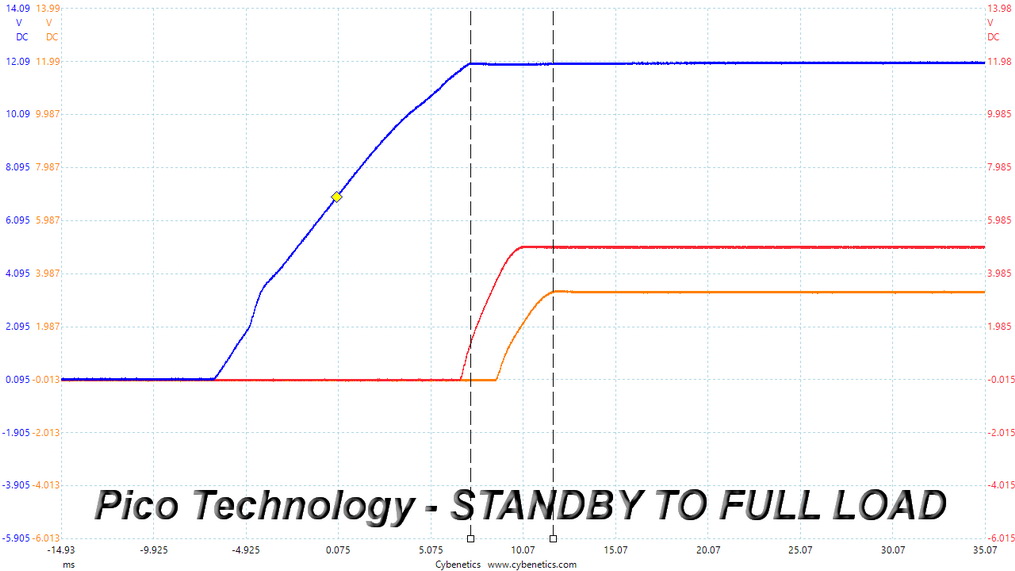

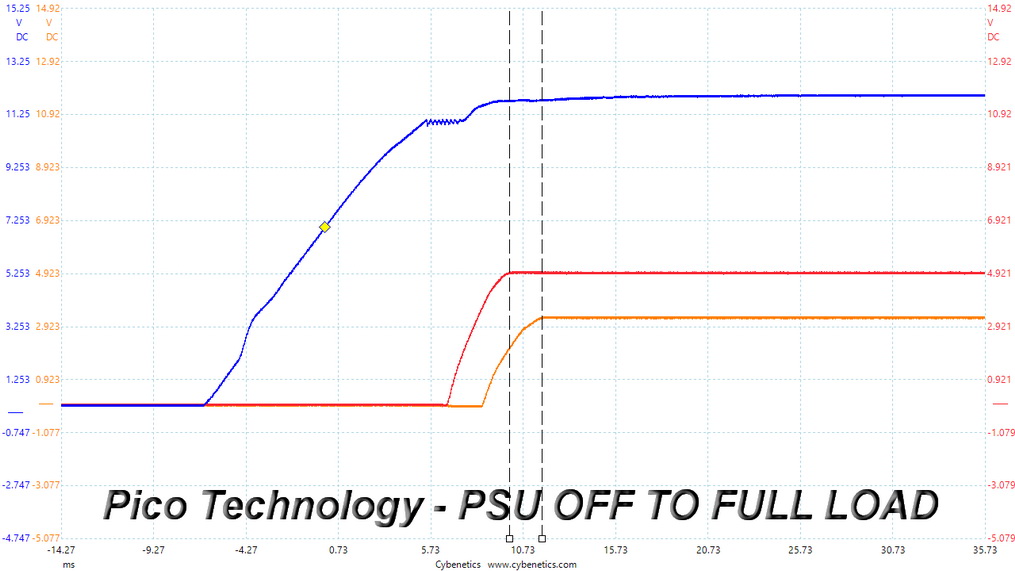
The +12V and 5V rails start first, so they are not even close, in any case, to the 3.3V rail.
Cross Load Tests
To generate the following charts, we set our loaders to auto mode through custom-made software before trying more than 25,000 possible load combinations with the +12V, 5V, and 3.3V rails. The deviations in each of the charts below are calculated by taking the nominal values of the rails (12V, 5V, and 3.3V) as point zero. The ambient temperature during testing was between 30 to 32 degrees Celsius (86 to 89.6 degrees Fahrenheit).
Load Regulation Charts
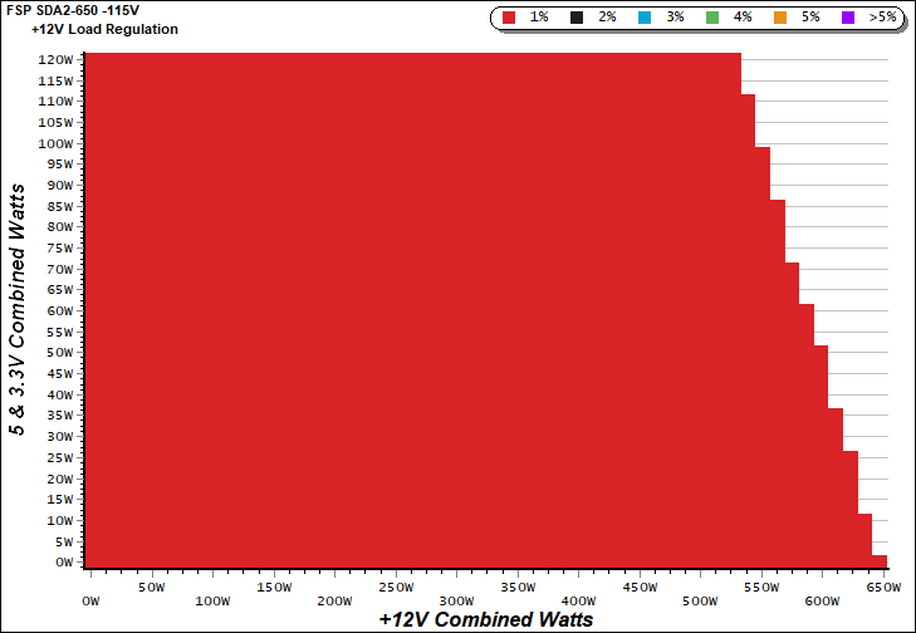
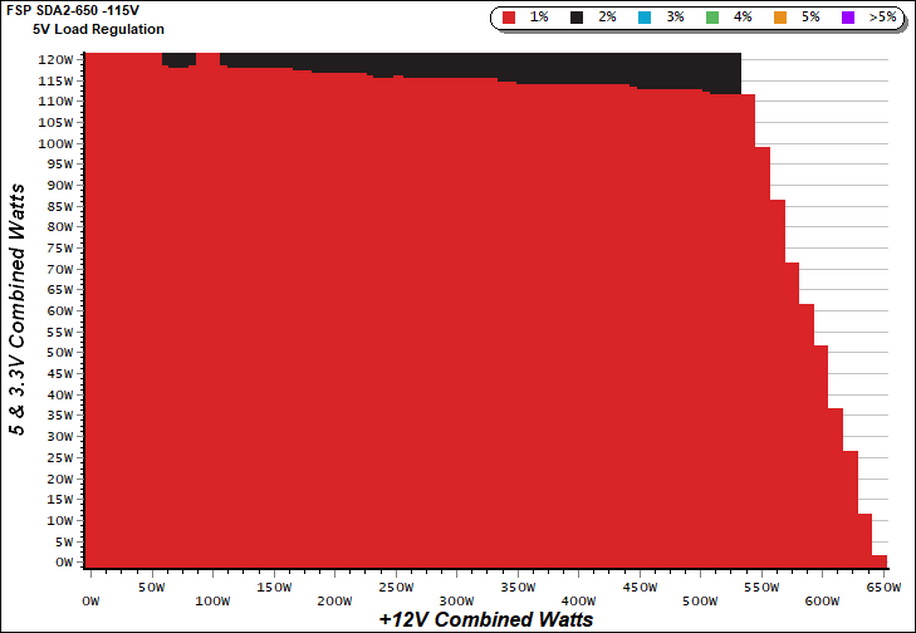
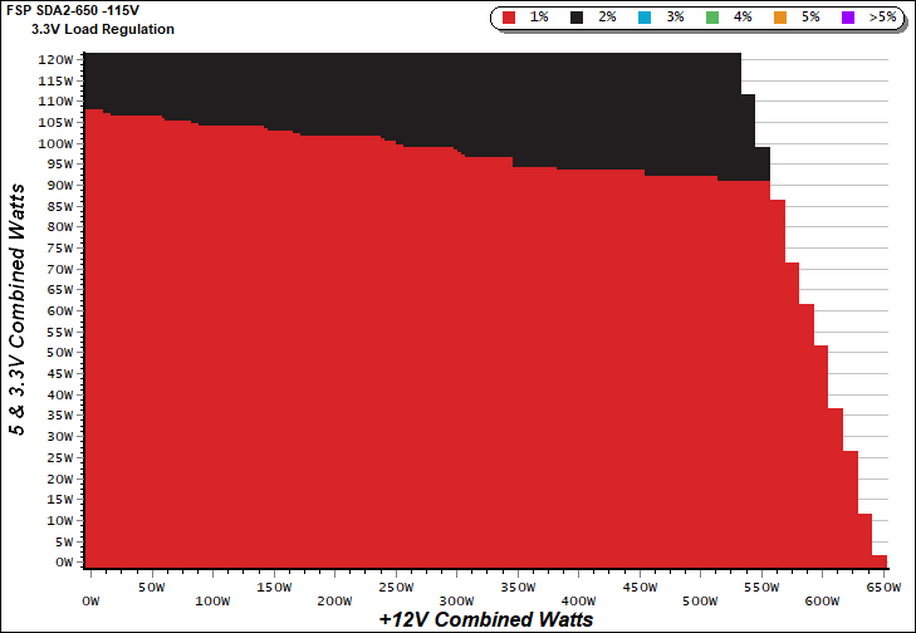
Efficiency Chart
The highest efficiency is from 140W to 410W at +12V, with the load on the minor rails staying below 80W.
Get Tom's Hardware's best news and in-depth reviews, straight to your inbox.
Ripple Charts
The lower the power supply's ripple, the more stable the system will be and less stress will also be applied to its components.
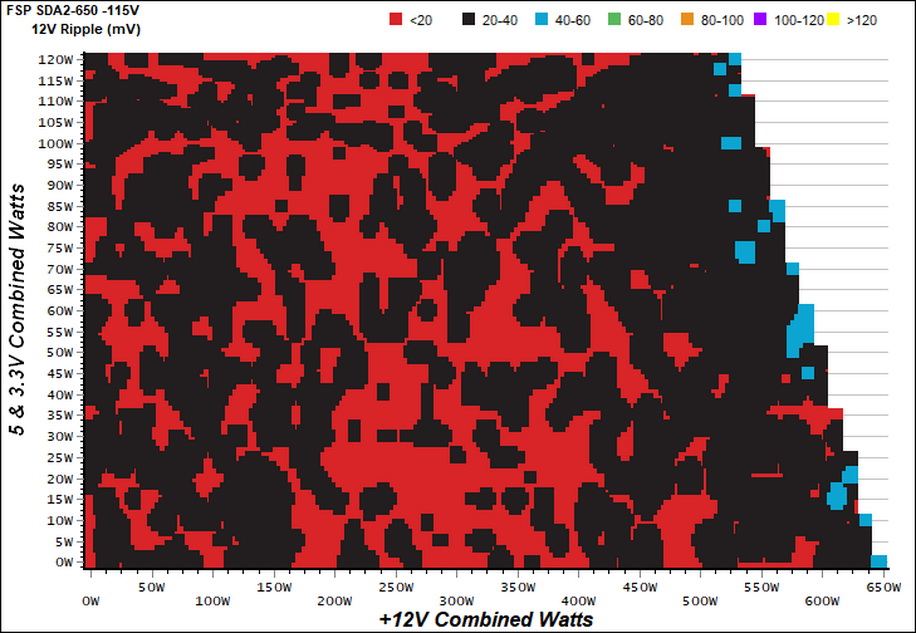
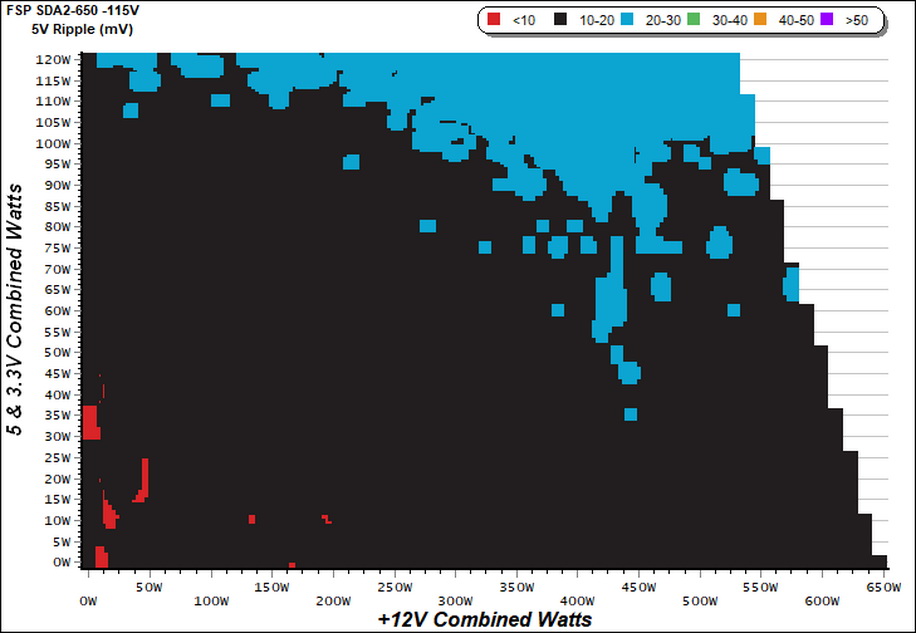
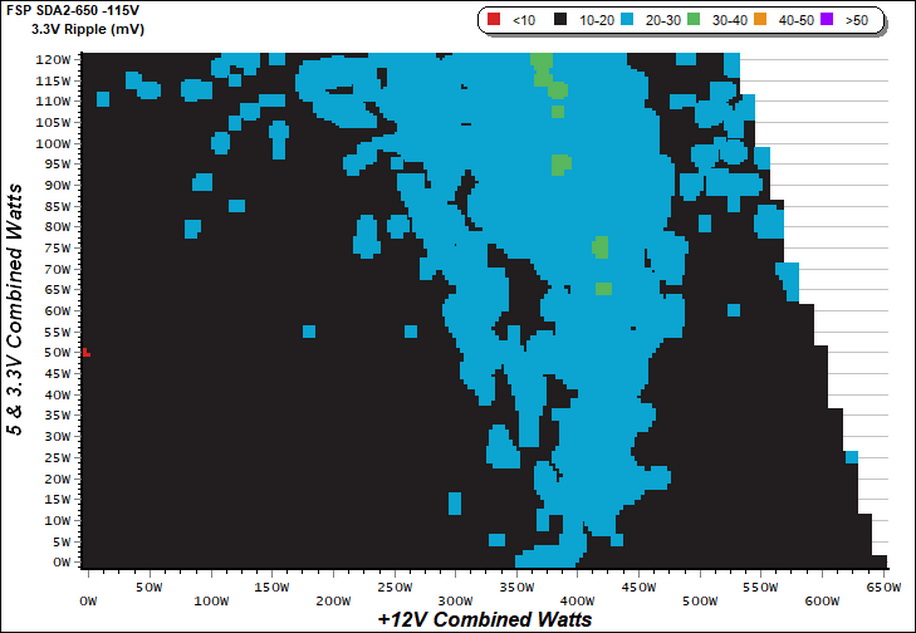
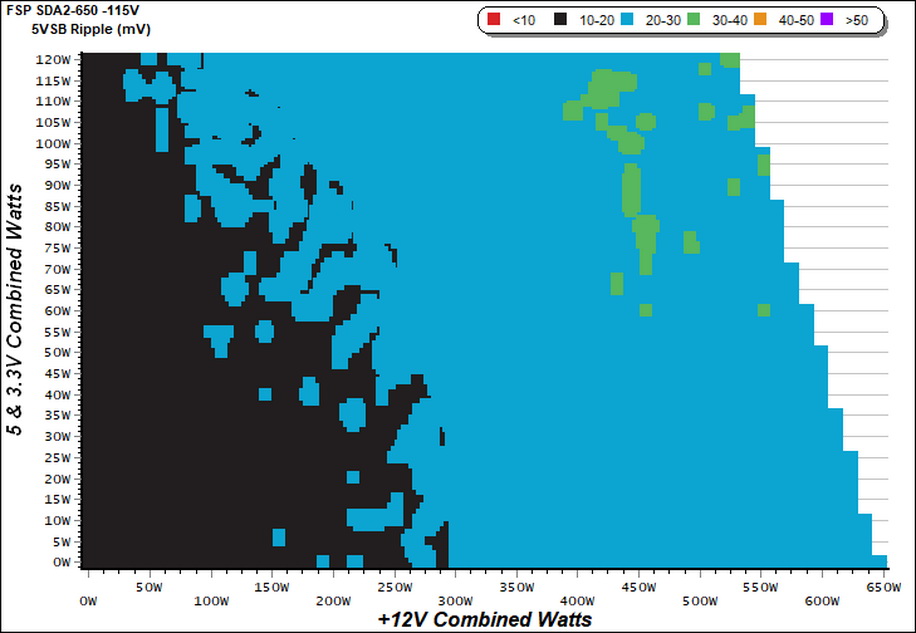
Infrared Images
We apply a half-load for 10 minutes with the PSU's top cover and cooling fan removed before taking photos with a modified FLIR E4 camera able to deliver an IR resolution of 320x240 (76,800 pixels).



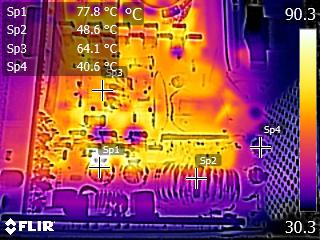
The hottest part is one of the Infineon FETs that regulate the +12V rail. There is a large filtering cap close to it, though, which is of high quality. Nonetheless, it would be much better if this cap was further away from the hot FET.
MORE: Best Power Supplies
MORE: How We Test Power Supplies
MORE: All Power Supply Content
Current page: Protection Features, DC Power Sequencing, Cross-Load Tests and Infrared Images
Prev Page Load Regulation, Hold-Up Time, Inrush Current, Efficiency and Noise Next Page Transient Response Tests, Ripple Measurements and EMC Pre-Compliance Testing
Aris Mpitziopoulos is a contributing editor at Tom's Hardware, covering PSUs.
